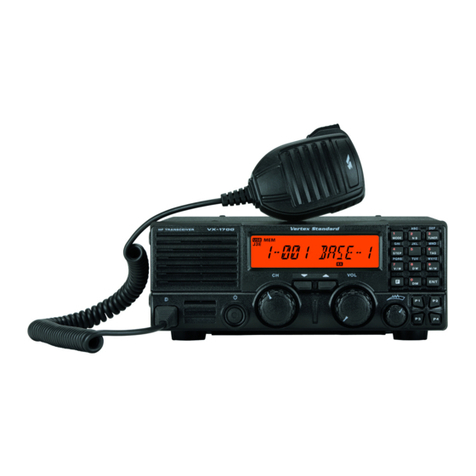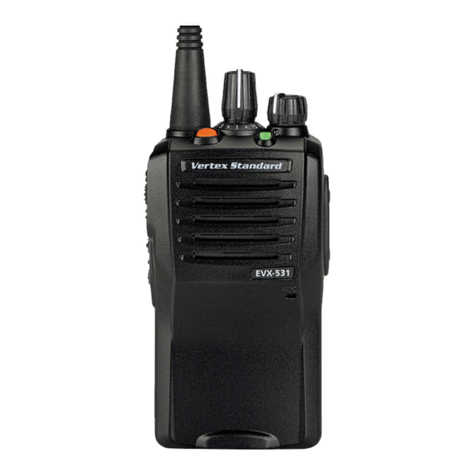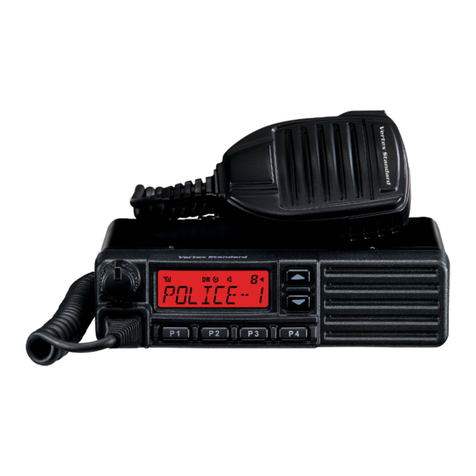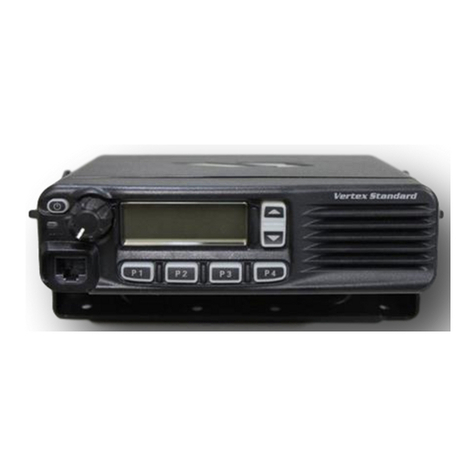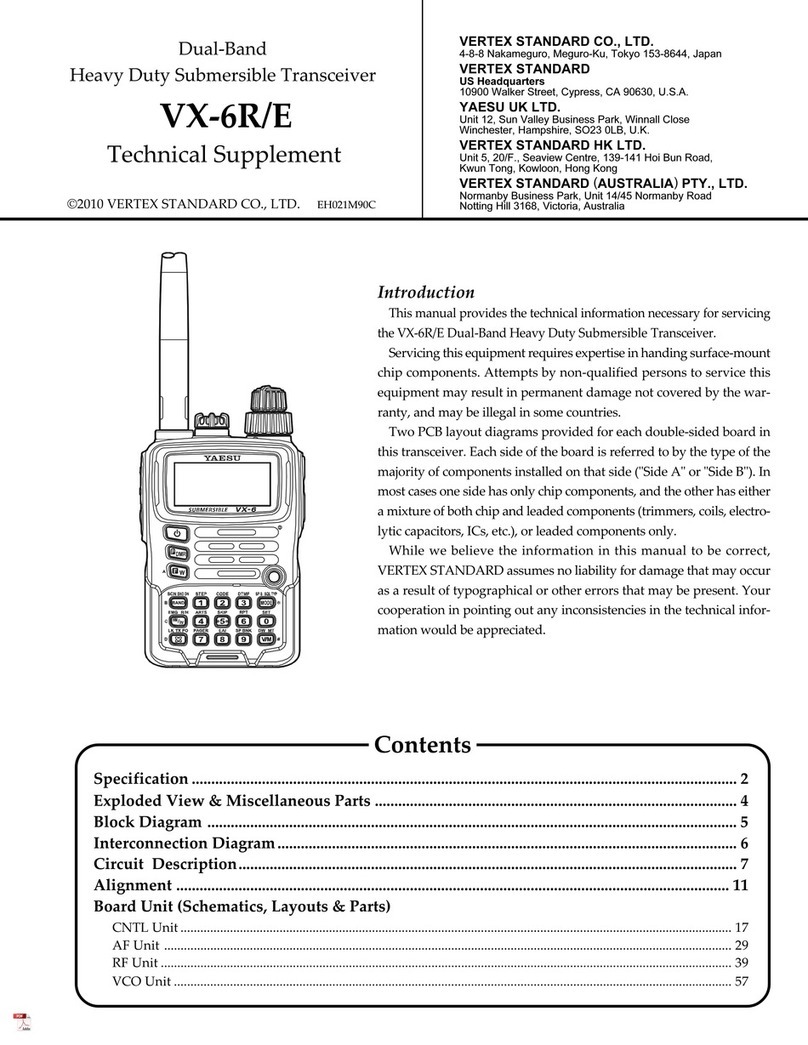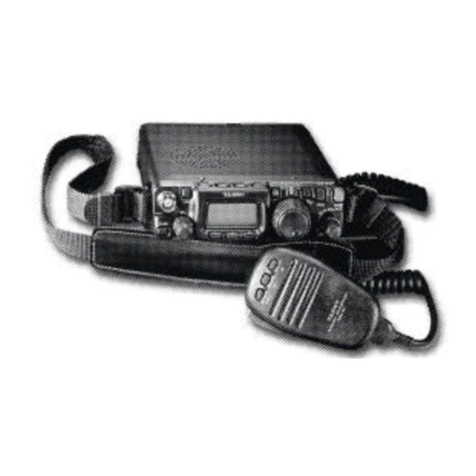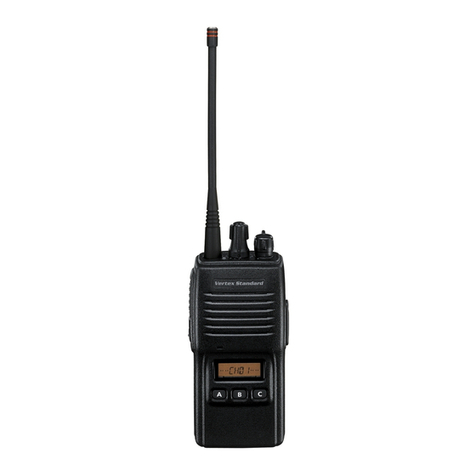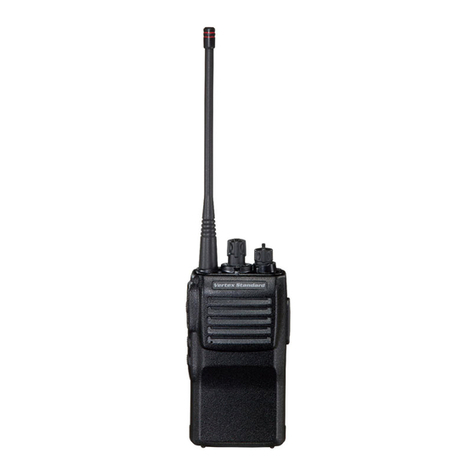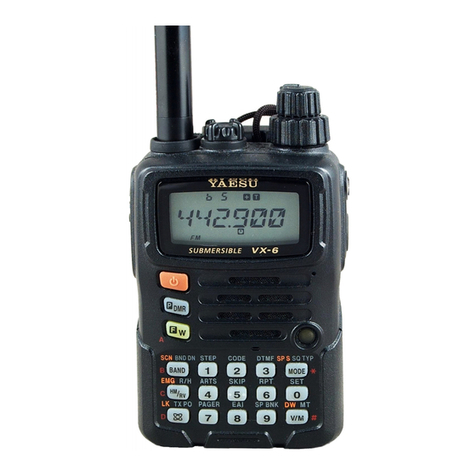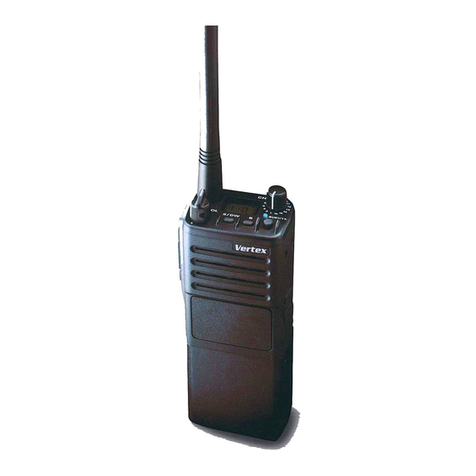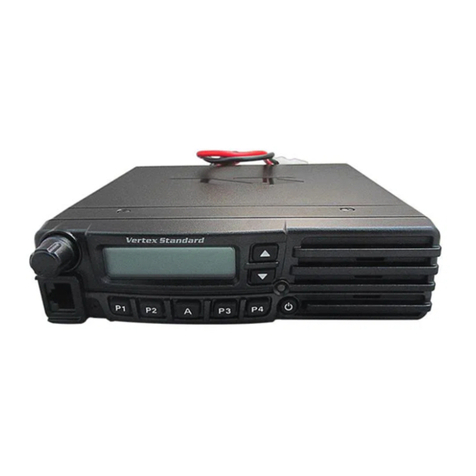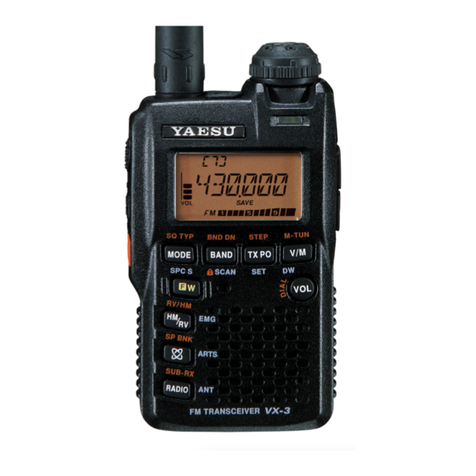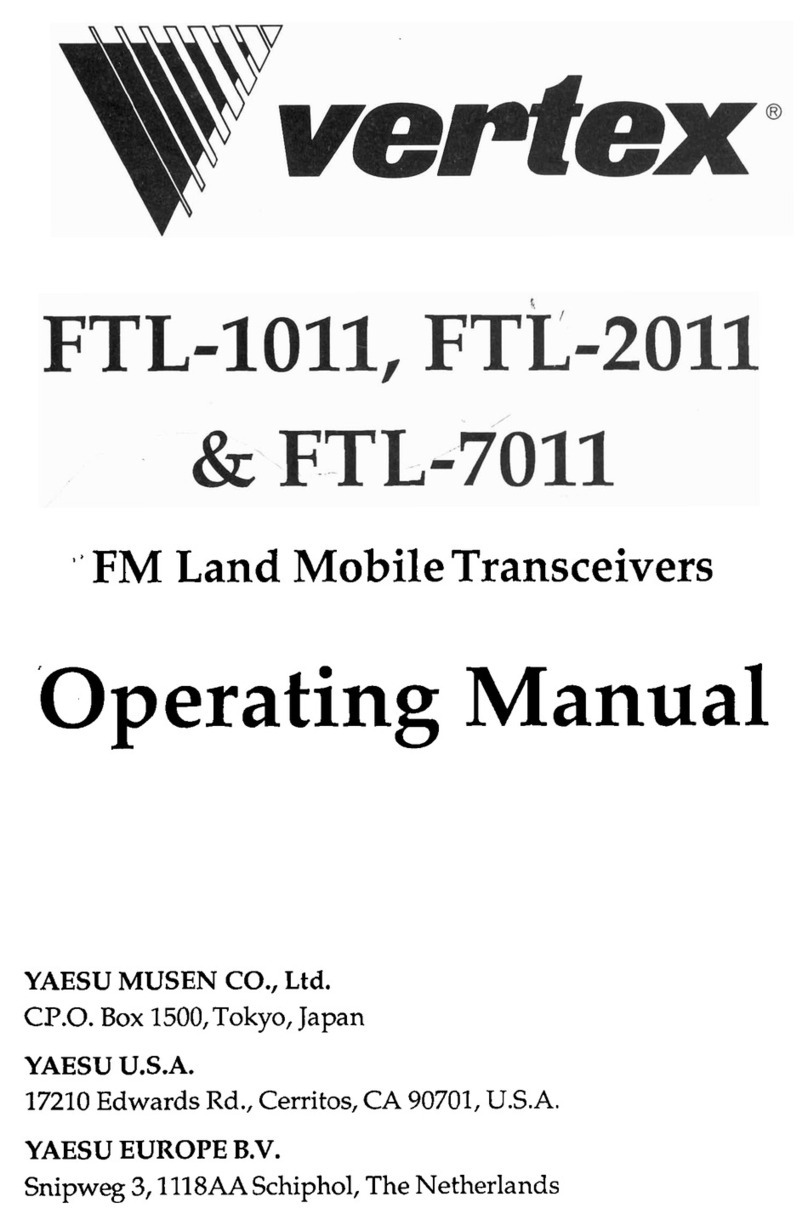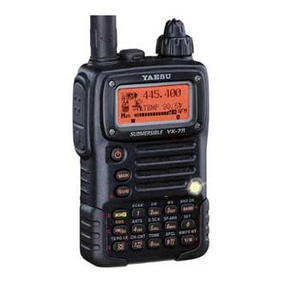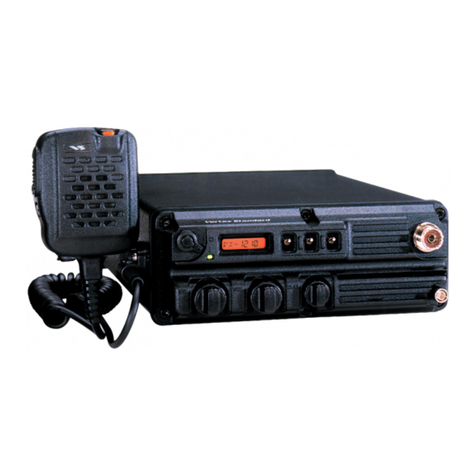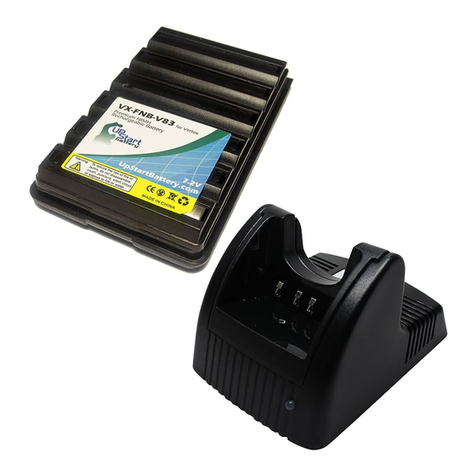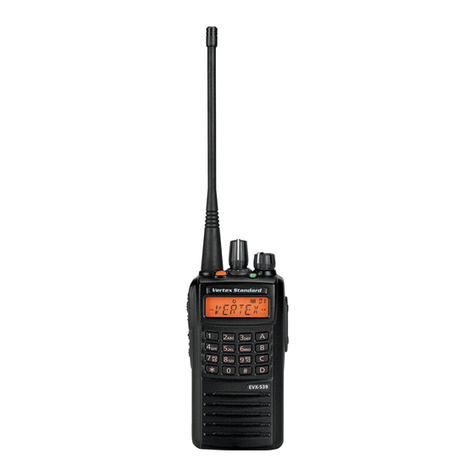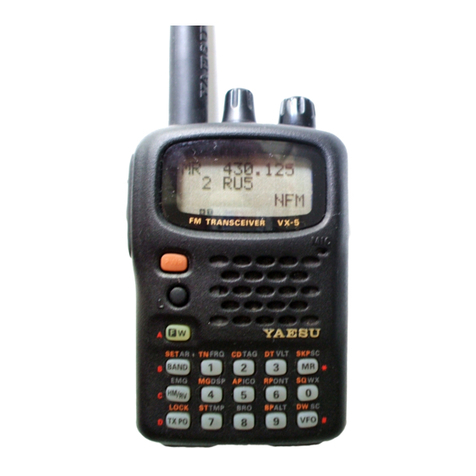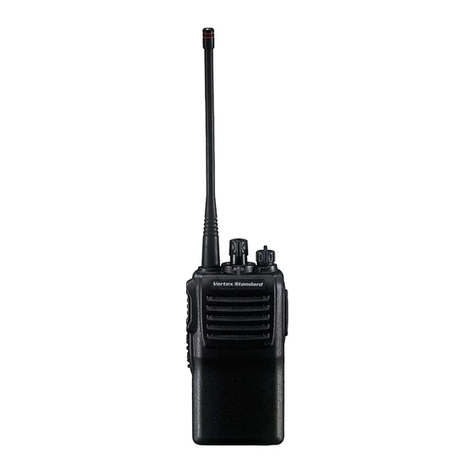
8VX-920/-920E VHF series Service Manual
nal passes through the limiter and splatter filter of
Q1032 (AK2345), and is adjusted for proper devia-
tion at Q1020 (M62364FP). The low frequency sig-
nal components (CTCSS, DCS, etc.) are then ampli-
fied by Q1075 (LM2902PWR) and used for direct
modulation of the reference oscillator, TCXO X1003.
The high frequency signal components are ampli-
fied by Q1075 (LM2902PWR), and their level is set
by Q1020 (M62364FP) to establish proper balance
of the level between high- and low-frequency com-
ponents. After that, the signals modulate the trans-
mit carrier via modulator D1027 (1SV286) of the
VCO.
3-2. Noise Canceling Microphone Signal Path
The two signals from the internal microphones
(main and sub) are applied to the positive input (sub)
and to the negative input (main) of Q1076
(LM2904PWR). If the same signal is applied to both
the main and sub inputs, the “main” signal will be
canceled at the output of Q1076 (LM2904PWR), Pin
7. In other words, noise from nearby sources not
directly involved in communication enters the main
and sub input at the same signal and is therefore
canceled out. When a signal is only applied to the
main path, and there is no signal at sub, the main
signal will be passed as-is from Q1076
(LM2904PWR).
3-3. Drive and Final Amplifier Stages
The modulated signal from VCO Q1052 (2SC4227)
is buffered by Q1042 (2SC5226) and amplified by
Q1033 (2SC5226). Then the signal is buffered by
Q1027 (2SC3356) for delivery to the final amplifier
driver Q1021 (2SK3475). The low-level transmit sig-
nal is then applied to Q1010 (2SK3476) for final am-
plification up to 5 watts output power. The transmit
signal then passes through the antenna switch D1012
(HVU131) and is low-pass filtered to suppress har-
monic spurious radiation before delivery to the an-
tenna.
3-4. Automatic Transmit Power Control
The current detector Q1072 (NJM12902V) detects
the current drawn by Q1010 (2SK3476) and Q1021
(2SK3475), and converts the current difference to a
voltage difference. The output from the current de-
Circuit Description
fier Q1071 (2SC4617), and noise detector D1047/
D1048 (both DA221). When a carrier is not being
received, the noise components passed from de-
modulator Q1067 (TA31136FN) are amplified by
Q1071 (2SC4617), fed through bandpass filter Q1067
(TA31136FN), detected as a DC voltage by D1047/
D1048 (both DA221), and applied to pin 16 (the A/D
port) of Q1069 (CPU: LC87F5BP6A). When a car-
rier is received, the DC voltage becomes low because
the noise is compressed. When the detected voltage
to the CPU is high, the CPU stops AF output by set-
ting Q1078 (CD4066BV) “OFF” (by making pin 59
of the CPU “Low” level. When the detection volt-
age is low, the CPU switches Q1078 (CD4066BV)
“ON” by making pin 59 “High,” and the AF signal
is allowed to flow.
2-5-2. Carrier Squelch
The pin 15 (A/D port) of CPU Q1069 (LC87F5BP6A)
detects the RSSI voltage output from Q1067
(TA31136FN) at pin 12, and controls the AF output.
The RSSI output voltage changes according to the
signal strength of carrier; a stronger signal makes
the RSSI voltage higher. The processing of the AF
signal control is same as Noise Squelch, except that
the switching threshold is adjusted so as to be 3 dB
higher than the “tight squelch” sensitivity.
3. Transmitter System
3-1. MIC Amplifier
The AF signal from the internal microphone (pin 4
of J1001) or an external microphone (pin 19) passes
through microphone selection switch Q1001
(NJU4053BV) and is amplified by microphone am-
plifier Q1076 (LM2904PWR), thereafter passing
through the microphone gain controller, Q1020
(M62364FP). The AF signal then passes through
compandor Q1023 (LA8630M). When not using the
compandor, the CPU bypasses the compandor cir-
cuit and feeds the signal to the pre-emphasis circuit.
Q1078 (CD4066BV) becomes “OFF” when an op-
tional signaling unit is attached, and the AF signal
from Q1023 (LA8630M) is redirected via the signal-
ing unit. If a signaling unit is not installed, Q1078
(CD4066BV) becomes “ON,” the signal bypasses
Q1078 (CD4066BV), and it instead is applied to the
pre-emphasis amplifier Q1032 (AK2345). The sig-

